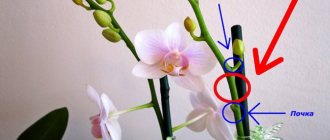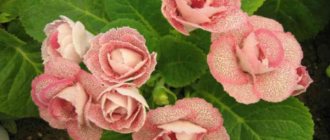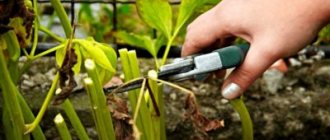Caring for peonies is not limited to just flowering, so it is important to know what to do next with the flowers.
Dear readers! For you, we have created communities on social networks in which useful articles and interesting ideas are published several times a day! Subscribe and receive useful content in a convenient format!
At the same time, the care algorithm itself does not have any difficulties. It is important to know the main work and the timing of its implementation.
We will tell you exactly what to do with flowers in today’s article.
Where to start caring for peonies after flowering?
The garden beauty blooms for only a few weeks.
Further care is needed, since the time after flowering is of great importance for the plant. If everything is done correctly, then next season the flower will again delight you with beautiful large flowers.
After the perennial has flowered, it begins to prepare for frost, and it will need additional strength, and, therefore, your help.
In addition, renewal buds begin to form at the base at approximately the same time. They will become the basis of a new flower next spring.
Peony care after flowering can be divided into several components. Here's what to do:
- Cleaning . To prevent fallen leaves and dry inflorescences from becoming a refuge for fungal spores and a home for parasites, they must be removed.
- Watering . Another important stage, which will be discussed in more detail.
- Loosening the soil . It is required for air to penetrate to the root.
- Feeding . An exhausted peony needs it after flowering.
- Trimming . It also has its own rules, which will be described below.
Feeding peonies in the spring at the dacha in April, May
Peonies begin to be fertilized in early spring for lush flowering as soon as the snow melts. In warm areas this period occurs at the end of March to the second ten days of April, and in cool areas - closer to mid-May. In order for the maximum number of dormant buds to hatch, as well as for the full growth of green mass, plants need nitrogen, and for the formation of buds - potassium.
How to feed peonies before flowering
Before flowering begins, fertilizers are applied to moist soil. Nitrogen is used in moderate doses; exceeding the permissible standards will lead to the fact that the stems and leaves will be massive, large, stringy, and if buds are formed, they will remain small and inconspicuous. Before and after fertilizing, the soil is loosened; the roots, provided with oxygen, better absorb nutrients. In total, 1–3 feedings are carried out in the spring, depending on the initial condition of the soil.
Feeding during budding with folk remedies
On thematic forums you can find several recipes for nutritional mixtures with milk designed to stimulate the formation and improve the development of buds. Fertilizers really give good results, at the same time they contribute to the rapid oxidation of the soil. In such an environment, peonies grow very poorly; normalizing soil pH is a long process.
Attention! Peonies bloom profusely only in slightly acidic or even slightly alkaline soil. Lime or dolomite flour is used as deoxidizing agents.
It is better to refuse milk solutions, especially since there is an alternative - wood ash. A glass of powder is poured into 5 liters of warm water, left for a day, then the volume is adjusted to 10 liters. This amount of fertilizer is enough for 2 medium-sized peony bushes. You can simply scatter the ash in a circle around the tree trunk, dig up the soil onto the floor of a shovel, and water the plants generously. In this case, a glass of raw materials is taken for 1 plant.
For flowering with folk remedies
Before flowering, feeding peonies with yeast is useful; it is carried out at the beginning of budding. A glass of sugar is dissolved in 2 liters of warm water, 120 g of dry baker's yeast is added, the mixture is left in a deep container under a lid for 12–14 hours, then filtered, poured into a bucket, and adjusted to 10 liters (with cool water). 5 liters of this fertilizer are poured under each young bush, and 8–10 liters under an adult bush.
Banana peel infusion also helps stimulate peonies to bloom. The skins of 4 bananas are cut into small strips, dried in the oven, then crushed into powder with a blender. Add Art. l. crushed eggshells and 20 g of magnesium sulfate, pour 1 liter of warm water, leave for 3-5 hours. The resulting infusion is sprayed on peonies early in the morning or after sunset in dry, windless weather.
Feeding peonies with peroxide during budding and right before flowering gives good results. For 1 liter of water, take 20 drops (1.5–2 tablespoons) of the pharmaceutical product, and irrigate the plants leaf by leaf. Dried tea leaves (drinking, not sweetened) have a similar effect; 500 g of the raw material is scattered in a circle near the trunk, then loosened the ground or dug into the floor with a shovel bayonet.
Let's highlight another way to increase the number and size of flowers. Take 500 g of dried black bread, soak the pieces in a bucket of warm water, add ¼ cup of sugar, leave covered for about 10–12 hours. Then the bread is squeezed out and the mixture is filtered through a fine-mesh sieve. The resulting fertilizer is enough for 1 bush. Feeding peonies with bread should be done at the moment when the first, small buds appear.
Spring fertilizing with mineral fertilizers
As soon as the “red” shoots grow, the peonies are fed with Kemira-Universal. When the stems grow to 6–8 cm, use a mixture of 15 g of superphosphate, 5 g of potassium salt. During the budding period, 50–60 g of Kemira-Kombi are added. Fertilizers are scattered in a circle around the trunk, then the soil is evenly moistened using a watering can with a strainer, while trying not to get water on the leaves and stems.
Attention! You can add 10 g of ammonium nitrate to the first mixture, thereby replenishing the lack of nitrogen. In this case, saltpeter is no longer used in the spring.
To ensure that the peony has strong shoots, at the beginning of their regrowth, the bushes are fertilized with ammonium nitrate (nitrogen fertilizer). Take only 15 g per bucket of water, pour the entire resulting solution under 1 plant. Feeding is repeated after 15–20 days, but now only half of the mixture is used. Work with ammonium nitrate carefully; the substance ignites quickly. Fertilizer temporarily acidifies the soil.
How to feed peonies for lush flowering in the garden
The most common spring fertilizer is urea; it is applied for active growth of green mass and strengthening the plant’s immunity. Strong peonies bloom profusely and for a long time. In warm regions, the product is used while the snow is still melting, and in cool regions they wait until the snow has completely melted. 30–40 g of urea are scattered around the bush, dug up, and watered. When the leaves begin to bloom, dissolve 5 g of urea in 1 liter of water and spray the peonies.
When to prune peonies after flowering?
Fading flowers of faded peonies can and should be trimmed. Otherwise, dry petals will fall inside the peony and create conditions for the development of fungus (gray rot).
What needs to be done for different varieties is described below.
Herbaceous varieties
There is no need to touch the bush itself even when the stems and leaves turn yellow. That is, in August and September.
Even if the peony looks unattractive, there is life in it. It prepares for the next year by forming renewal buds underground. Without the plant part, their formation will be impossible.
Wait until late autumn, and then it will be possible to prune the parts protruding above the ground. The ideal time would be the first frost. After pruning, cover the base of the peony with humus, which will protect the buds and root system from the cold. With the onset of warmth, humus will serve as an excellent fertilizer for peonies. Layer height – 10 cm.
IMPORTANT ! Pruning must be done with sharp pruning shears.
Tree species
Pruning for tree varieties is done differently.
The process takes place in early April. At this time, remove all weak, dried and broken branches. When the buds appear, final pruning is done. Break off unnecessary shoots that can thicken the peony.
REFERENCE. A tree-type peony always takes up more space than a herbaceous one. It can be shaped like a tree or a large bush.
After flowering, pruning of tree peonies is carried out in the same way as with ordinary herbaceous peonies. That is, dry inflorescences are removed. But in autumn these varieties are not pruned; they will need shelter.
Preparing peonies for winter: pruning
During the flowering period, peonies look amazing - lush buds of bright shades of pink cover the entire garden. But when the plant begins to bloom, it looks unsightly and is a green bush with narrow, long leaves. Therefore, inexperienced flower growers make a big mistake - they prune the peony bush almost to the root. The motivation is obvious: the crop no longer looks capable of producing new flowers, so it is better to cut it back for the winter. To avoid this mistake, you need to understand how peonies bloom.
Peonies cannot be pruned at the root immediately after flowering.
Is pruning necessary and why?
Plant nutrition is largely provided by photosynthesis, which occurs in the green part of plants - leaves. If you prune them immediately after the bush has bloomed, the flower will be deprived of energy and nutrition. The accumulation of nutrients becomes impossible, and without them, growth buds will not form, from which buds will develop in the next season. Therefore, thoughtless pruning at the root is strictly not recommended. If the climate is favorable and the soil is fertile, the bush will survive and may even bloom again. However, the plant will weaken and there will not be as many buds as the previous time.
Important! But pruning is necessary for peonies; it is carried out immediately after the plant has flowered.
First of all, you will need to remove the buds and weak leaves underneath them. If you don’t plan to breed and replant peonies, you don’t have to wait for a box to form on the peduncle.
Pruning in the first years of life
After planting peonies, the gardener wants to quickly see the result of his labors - the lush flowering of large buds. However, the bush should not be allowed to bloom the first summer - the buds are cut off immediately after they appear, even before flowering. They do the same in the next season, and only in the third year of life can the peony be allowed to bloom. If you act differently, the bush may not grow strong enough and die in the winter, be susceptible to disease or produce weak flowering. However, if it is strong and the climate is favorable, you can try to leave the buds in the second year of the crop’s life.
Important! When pruning, do not touch the foliage and stems; only remove the buds themselves.
How and when to prune dried flowers
When the peonies have faded, what to do next with them is a pressing problem for the gardener. It was already explained above that under no circumstances should you cut them at the root, but what are the rules for pruning? The first of them is to remove flowers too early, that is, immediately after flowering, it is not worth it. You need to wait for the moment when all the flowers fall and the last flower withers - then you can begin the procedure.
You can remove the buds only some time after flowering has ended.
There are three types of pruning of peonies, each of them has its own purposes and is needed for both types of flowers (tree and herbaceous):
- Spring. Aimed at strengthening the plant. During this period, branches that have weakened over the winter are removed.
- After flowering. It is carried out 1-2 weeks after the end of flowering, without it the bush will weaken.
- Pre-winter. The most important pruning is to allow the peony to gain strength for the next season.
Before frost, the bush must be prepared, otherwise it will die from exhaustion or weaken.
Spring pruning is carried out in mid-April, its purpose is the formation and rejuvenation of the bush. There is no need to be afraid that severely shortening the shoots will affect the speed at which buds appear, because peonies grow very quickly.
Procedure algorithm:
- Trim branches and leaves of the second season to the growth node.
- Remove weak shoots, leaving literally 10-20 cm of the stem.
- Cut off 1/3 of the buds that appear so that the remaining ones become larger.
- Remove all root shoots from the tree peony.
- Trim frozen shoots.
If the bush has been growing for more than 10 years, every spring you need to prune it radically, leaving only 10-15 cm of branches from the ground. For them, removing shoots at the root is useful: this is what experienced gardeners do.
Important! Spring pruning is carried out until May, but it is necessary to focus on the climate.
To accurately determine when to prune peonies after flowering, you need to track them. As soon as new buds stop opening and those already blooming begin to fade, we must begin the countdown. After 1-2 weeks after this, you can prune it, tearing off the flowers. The leaves cannot be touched - this was mentioned above.
To ensure that peonies bloom larger next year, you can leave the top buds - literally a few pieces.
It is very important to collect fallen petals and leaves from the roots of the bush - they accumulate moisture, creating favorable conditions for the appearance of fungus and mold. After this, the peonies can be left alone until the first frost - at this time autumn pruning is carried out. The optimal time for it is the end of October or the beginning of November, but not earlier: the roots will not receive the proper amount of nutrients and will weaken. If the place where peonies grow is a dacha, you need to regularly check the bushes so that they are not attacked by pests or diseases during this period.
Important! Autumn pruning can be done earlier for two reasons: peonies dry out prematurely or are affected by disease.
The autumn procedure is performed according to a certain scheme:
- Using a sharpened garden tool, trim the stems, leaving 4-5 cm above the growing point. The remaining shoots can be removed, sometimes even at the root, going deeper into the ground.
- Collect cut leaves and twigs, carefully checking their presence at the root zone of the bush.
- Cover the growing area of peonies with peat or dry humus for the winter, the thickness of the protective layer is 10-15 cm. It is not recommended to use dry grass as insulation - it can become a breeding ground for pests.
- Before insulation, you can sprinkle the ground and the bush itself (a little) with wood ash. It is a natural medicine for peony: it heals wounds, provides nutrition and disinfects.
Once peonies are pruned after flowering, they require special care. It differs from the recommendations during flowering, because the lion's share of nutrition during this period goes to the buds.
Tree peony pruning
For tree peonies, the general pruning rules are the same as for herbaceous peonies, the only difference is that dry and damaged shoots are not removed, but are left until the spring months. In the spring they are cut back to the first bud, forming a peony bush. Every 20 years, anti-aging pruning is carried out, cutting off the branches almost at the root. If this is not done, the side shoots will not awaken and bloom.
For tree peonies, only the autumn pruning is slightly different; after flowering, the buds are also removed
Trimming errors
Peonies bloom so beautifully that it is difficult to resist the temptation to cut the bouquet. This negatively affects the condition of the bush, because not only the buds are removed, but also the foliage and stems. It would also be a mistake to prune earlier or later than a certain period. You cannot prune peonies in August, when flowering is still ongoing, unless it is a cold climate.
Important! It is unacceptable to trim foliage in the autumn; only damaged shoots can be removed.
When to feed peonies after flowering?
Despite the fact that the peony is particularly unpretentious, and it needs feeding. After flowering, adding nutrients will help the crop gain strength for future flowering.
First, apply organic fertilizers, such as mullein infusion.
You need to do this: dig a small groove around the perimeter. Pour mullein infusion into it, prepared in a ratio of 1:10 with water.
Next, mineral complexes are added. The optimal time for this is August. Choose phosphorus-potassium mixtures, since nitrogen fertilizers are not particularly needed in the autumn.
This feeding will be needed in the range of 30-40 g per bush. They are also introduced around the peony into the dug groove. Next, when the dry fertilizer is scattered, add water and fill the groove with earth.
It is also advisable to carry out one foliar feeding. Choose a dry day and spray the peony bush with trace elements.
REFERENCE. As an example, you can take the nutrient liquid “Agricola” or similar ones. It is diluted as follows: for 1 liter of water - 5 ml of the drug.
Disease and pest control
Common fungal diseases of peonies are gray rot, rust, gray and brown spot .
Signs of gray rot appear in damp and cold spring in the form of brown spots at the base of weak and young shoots. The spots increase in size and become covered with a gray coating. The stems in these places rot, break and fall. The fungus also affects the leaves - spots appear on them at the edges, the petals on the buds darken, bloom poorly and the flower takes on an ugly shape.
The fungus is combated using Bordeaux mixture and copper oxychloride. 50 g of one of these products is dissolved in 10 liters of water and the plants are treated 2-3 times with a break of 10-12 days. Diseased parts of the peony need to be cut off and destroyed. To prevent gray rot, in April the soil at the base of the stems around the plants is dusted with ash.
Copper-containing preparations are also used to combat rust . Signs of the disease are brown or brown spots on the upper side of the leaves. Orange or yellow swellings containing fungal spores form on the underside.
To prevent rust, bushes are sprayed with Bordeaux mixture (100 g per 10 l of water), copper oxychloride (60 g per 10 l of water), and 1% solution of colloidal sulfur.
With brown (septoria) and brown spotting , leaves, stems, and sometimes buds are covered with round or elongated brown, dark brown spots. If the damage is severe, the leaves may dry out. Diseases weaken the bush and have a bad effect on winter hardiness and future flowering.
For spots, plants are treated in the spring before budding with 1% Bordeaux mixture, 0.5% Abiga-Pik or Fitosporin-M solution (6 ml of concentrate per 10 liters of water).
, powdery mildew may appear on the bushes . The leaves on top are covered with a light coating consisting of fungal spores. The foliage changes shape and dries out. At the first signs of the disease, use the preparations “Fundazol” (10 g per 10 l of water), “Topaz” (2 g per 10 l of water), “Baktofit” (10 g per 10 l of water), and a soap solution of soda ash.
In addition to the above-ground part, at high humidity, fungi damage the root system, causing softening, rotting of the rhizome and death of the plant. The appearance of root rot can be avoided if you use healthy planting material, follow agricultural practices - monitor soil moisture, and do not plant plants in areas with acidic soil.
In addition to fungal infections, the decorative value of peonies is reduced by viruses. The most common of them is ring spot . It is characterized by the appearance on the leaves of small or large vague and annular spots of light green, yellow color. The leaves are deformed, wrinkled, the petioles bend towards the bottom, and variegation appears on the flowers. Viral diseases cannot be treated; they spread through soil, infected planting material, and pests.
Peonies are harmed by aphids, ants, and thrips . They suck the sweet juice from the buds. The bronze beetle eats flowers and leaves. Root-knot nematodes and hop borer damage the roots.
To combat them, 0.2% preparations “Karbofos”, “Iskra”, “Fitoverm”, decoctions of dandelion and tomato tops are used.
Features of watering flowers after flowering
In order for the plant to form buds correctly, moist soil is necessary. Some gardeners stop irrigating the perennial after flowering, but this is wrong. The flower will become stressed, which will cause the formation of weak buds.
Irrigation is required if the summer is dry. At the same time, the volume of water is reduced gradually. So, for example, if you used 25 liters of water to water each bush, then you should do it as follows: first up to 15 liters, then up to 10 liters, and so on until irrigation stops completely.
Features of preparation for winter depending on the region
Pruning jasmine after flowering and to form a bush
If peonies are not covered for the winter, the buds and roots may suffer from the cold. This is especially true in Siberia and the Urals, where winter temperatures are very low and there is a lot of snow. Mulching is necessary, its height should be at least 8-10 cm. Its volume is 8-10 liters per bush, the material is decomposed crumbly compost, deoxidized peat (can be bought at a professional gardening store) and soil. Also, some gardeners cover peonies with buckets and cardboard boxes on top.
If the winter is not very snowy, but cold (central Russia), the shelter can be made less thorough. It is very useful to add sand before the mulching layer - about a shovelful per bush. But you can’t cover them alone for the winter - they don’t retain heat well.
If the region experiences snowless winters, as in the south, mulching must be done.
Peonies are brightly flowering plants and are known for their ease of care. In order for them to delight you with lush flowering every year, you need to properly care for the bush, namely, carry out proper pruning. If you do all three stages of this simple procedure correctly, the peony bush will delight the gardener for many years.
How long after flowering can peonies be replanted?
Peony is a plant that requires regular replanting. If this is not done, then the varietal characteristics will disappear over time, first the flowering period will be shortened, then the flowers will be crushed.
Experienced gardeners recommend replanting at least once every 5 years.
The optimal time for transplantation is considered to be the end of August - beginning of September.
The conditions for transplantation will be as follows:
- Choosing a location. This issue needs to be approached thoroughly. Since peony is a heat-loving plant, choose areas with good access to light. In addition, air movement should be free, but without the risk of drafts. The ideal place is partial shade during the day.
- Preparation . The day before digging up the perennial, soften the soil around it as much as possible.
- Soil selection . The best substrate for perennials is a loamy soil base. In areas with a predominance of sandstones, a mixture of compost mixed with clay is added to the soil.
The planting hole is dug 55–70 centimeters in size, both in depth and width. If several bushes are transplanted, then the distance between them should be at least 1 meter.
Next, to provide a drainage layer, a mixture of crushed stone, crushed red brick and river sand is placed at the bottom of the pit. The thickness of this layer should be within 20 cm. Next is a layer of nutrient substrate that will cover the hole by 50 cm. It consists of a mixture of peat, humus, and turf.
Types and varieties of peonies
According to the structure of the flower, peonies are divided into 7 groups:
Non-double
They have one or two rows of petals. The flowers are large, there are numerous stamens in the center of the flower, the leaves are sometimes corrugated (for example, varieties Golden Glow, Nadya);
Semi-double
Very large, light flowers; the stamens are located either in the center of the flower or between the petals. The flower usually has seven rows of petals. Varieties:
- Miss America is a mid-early variety, a pink flower 25 cm in diameter turns white after opening, the stamens are bright yellow;
- Ann Berry Cousins - an early variety of coral-pink color, cup-shaped flower 17 cm in diameter, bush up to 65 cm tall;
In the photo: Non-double peonies
Japanese
The modified stamens in the center of the flower form a pompom; the petals in the flowers can be in one or several rows. Varieties:
- Carrara is a medium-flowering white variety, 16 cm in diameter, bush height – 80 cm;
- Hot Chocolet is a mid-early peony of dark burgundy color, 16 cm in diameter, height up to 80 cm;
Anemoneaceae
A transitional form from Japanese peonies to the group of double peonies. The lower petals are wide, rounded, arranged in two rows, the central petals, shorter, form a ball. Varieties:
- Rhapsody is a mid-early variety, the marginal petals are pink, the central petals forming a ball are yellow-cream, flower diameter is 16 cm, bush height is 70 cm;
- Snow Mountain – early cream-colored peony, 17 cm in diameter, height – 75 cm;
Terry hemispherical, bomb-shaped, spherical
The petals of the flower are collected in a hemisphere and, when fully opened, form a ball. Varieties:
- Pink Cameo - a medium-late variety of creamy pink color, 16 cm in diameter, bush 80 cm in height;
- Monsieur Jules Ely - an early fragrant variety of lilac-pink color, diameter - 20 cm, height - 90 cm;
In the photo: Semi-double peonies
Rosaceae
The petals of a flower, very similar in structure to a rose, are the same in size, round, wide, large. Varieties:
- Solange is a late creamy-white peony 17 cm in diameter, the height of heavy stems that need support reaches 70 cm;
- Henry Boxtox is an early variety of bright red color, 16 cm in diameter, bush 90 cm tall.
In the group of pink peonies there is a subgroup of semi-rose peonies, which are distinguished by the presence of an island of stamens in the middle of the flower. Varieties:
- Gudi – mid-early, bright crimson, 16 cm in diameter, height – 70 cm;
- Ballerina is an early variety of white-cream-green color, a powerful bush, flower diameter is 18 cm.
Crown hemispherical and spherical
Flower petals are arranged in three tiers: the upper tier is a ring of petals, the middle one consists of petals that are narrower than those on the upper and lower tier. As a rule, the top and bottom rows are the same color, the middle row may differ in color. Varieties:
- Nancy is an early variety of pink-peach color, 17 cm in diameter, bush up to 80 cm tall;
- Aritina Nozen Gloria is a very early variety of pink-lilac hue, bush height - 70 cm, flower diameter - 20 cm.
When can peonies be propagated?
You can increase the number of perennials on your site in various ways:
- dividing the bush;
- cuttings;
- kidney renewal;
- using layering.
Each method has its own period for reproduction.
- The division of the bush is carried out closer to autumn and can take place until the second ten days of September.
- Not all varieties of crops have seeds due to their varietal characteristics, so propagation by this method is not so popular. Mostly herbaceous varieties reproduce by seeds. Seed material is collected in August and September.
- Propagation by root cuttings serves as an additional method when dividing a bush. This way you can get much more material and much more guarantees that the peonies will take root. Layers are usually planted in the fall.
In August - divide and replant
Old peony bushes bloom worse and worse over time, so they need to be divided and replanted. There are different opinions about the frequency of transplants: some gardeners advise dividing peonies once every 8-10 years, others – once every 4-5 years. Here it is better to focus on the state of a specific instance:
- If the bush has grown greatly and began to bloom worse, it is most likely time to replant it. The older the bush, the larger and stronger its roots, the harder it will be to divide it, and this is also worth taking into account.
August is considered the optimal time for dividing and replanting a peony , but you can still have time during September. We devoted one of our blog articles to the methods and nuances of transplantation:
How to transplant peonies to a new place?
Do you have experience on the topic? Share your experience in the comments, we will be glad











